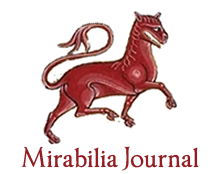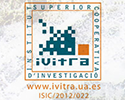An Approach to the Sources of Jaume Ramon Vila’s Dietari
Arantxa LLÀCER MARTORELL
Original title: Aproximació a les fonts del Dietari de Jaume Ramon Vila (AHCB, ms. b-100)
Published in
Keywords: Barcelona, Diary, Jaume Ramon Vila, Source.
This article studies the figure of the historian and heraldist Jaume Ramon Vila through the analysis of one of his unpublished works, a diary that narrates events that belong to the years 1596-1601. The author, a well-known writer within the field of early modern Catalan studies, designed his diary as a commentary on the most important events that took place in the city of Barcelona and the Principality of Catalonia. Vila used all his historiographic knowledge in the production of his diary and the result if a text based on the principle of truthfulness that makes use of his personal notes and documentary sources to support his assertions. The study of the sources and the diary provide us with a better understanding of the period and of an author somewhat underrated by previous scholars.
An approach to the iconography of the Book of Hours of Isabel the Catholic, Ms. II / Tesoro, Real Biblioteca: 4 Marian Images between the biblical text and apocryphal legends
Herbert GONZÁLEZ ZYMLA, Concepción del CASTILLO BLASCO
Original title: Una aproximación a la iconografía del Libro de Horas de Isabel la Católica, Ms. II/Tesoro, Real Biblioteca: 4 Imágenes marianas entre el texto bíblico y las leyendas apócrifas
Published in
Keywords: Apocripha, Book of Hours, Isabel the Catholic, Marian iconography, Medieval Art.
This article focuses on highlighting the role that, in the context of the spread of the devotio moderna during the late Middle Ages, acquired the precious Book of Hours of Queen Isabel the Catholic. To focus as much as possible the research topic, our paper analyzes –between the many miniatures illustrating this splendid illuminated codex– only four images referred to Mary: the Presentation of the Virgin to the Temple, the Annunciation, the Adoration of the Magi and the Coronation of the Virgin Mary. We complete our analysis by comparing these four images with the biblical and apocryphal texts that narrate these Marian events.
Ancient Medicine and the body’s perception in Hippocrates (c. 460-370 BC)
Hélio Angotti Neto
Original title: A Medicina Antiga e a percepção do corpo em Hipócrates (c. 460-370 a. C.)
Published in Rhythms, expressions and representations of the body
Keywords: Galen, Hippocrates, History of Medicine, Human Body, Nature of Man.
Hippocratic medicine addresses the human body and its phenomena based on principles like the complexity and the balance of its components among themselves and its relations towards the nature. By means of logical formulations based on the composition of the human body by humors (blood, phlegm, yellow bile and dark bile) and, consequently, principles (heat, cold, dry and humid), the Hippocratic author seeks an explanation of phenomena such as epidemic diseases and nutritional disorders. Although the text is anachronistic, according to the current scientific perspective, there are epistemological principles obtained through contemplative science and empiricism that still have some value in relation to medical epistemology concerning human body comprehension.
Andreas Capellanus (XII century) and The game of Love
Nicolás MARTÍNEZ SÁEZ
Original title: Andrés el Capellán (siglo XII) y el juego del Amor
Published in The Medieval Aesthetics
Keywords: Andreas Capellanus, Court Love, Game, Segle XII.
Andreas Capellanus writes De amore at the end of the 12th century in a context of interweaving of traditions such as the Christian clerical, the feudal courtesan and the troubadour poetry. In this work, a new aesthetic sensibility is represented in love that acquires a playful dimension. The dialogues that arise between people of different social classes and the so-called Love´s Court reveal this game where men and women argue in favor of a love that does not obey social classes. De amore is composed of three books. The first two are those where seriousness and play seem to mix in a work that is both a scientific treatise and a practical manual of the rules governing worldly relations between men and women. The last book can be understood in a playful dimension where it is possible to win in only one way: by giving up.
Angelus or The touch of the Virgin: the Music in the Cantigas de Santa Maria (13th century) by King Alfonso X
Bárbara Dantas
Original title: Angelus ou O toque da Virgem: a Música nas Cantigas de Santa Maria (séc. XIII) do rei Afonso X
Published in Music in Middle Ages and Early Modernity
Keywords: Alfonso X, Architecture, Art, Cantigas de Santa María, Middle Ages, Music, Poetry.
Harmonious as a song, the Galician-Portuguese poetry, systematized by the zéjel metric, was the basis of the poetry of Cantigas de Santa Maria, a compilation that contains reports of miracles and praises to the Virgin performed in the second half of the 13th century at the request of the castilian king Alfonso X (1221-1284), creator, sponsor and supervisor of the work. In Cantigas, reality is overcome by imagination without limits and the relation of poetry with two other artistic forms (Music and image) makes it literary support in which the themes of the songs to the Virgin were formed. Music and image share with the poetry a sensitivity capable of expressing in different ways certain reports of miracles or praise. For this article, I present to you the Cantiga 276 of the Cantigas de Santa Maria. From iconographic and architectural analyzes, I realized the association between church bells, the architecture of the sanctuary towers where they are housed and the melody of the Angelus (The Virgin's Touch).
Another Manner of Humanistic Literature during the Fifteenth and Sixteenth Centuries: the vitae Christi by Isabel de Villena and Cristóbal de Fonseca
Roxana RECIO
Original title: Otra forma de literatura humanística de los siglos XV y XVI: las vitae Christi de Isabel de Villena y Cristóbal de Fonseca
Published in Isabel de Villena (1430-1490)
Keywords: Franciscan literature, Isabel de Villena, Vita Christi.
This article analyzes the vitae Christi written by Isabel de Villena (fifteenth century) and Cristobal de Fonseca (sixteenth century) from the the point of view of the European tradition and the reform brought about by the Franciscan order, which was in favor of reaching the people in the vernacular. Issues such as alleged femininity, use of popular language with sentimental overtones, dependence on fictions from different periods, debt to specific sources, and structuring works with a specific reader in mind are examined. After reviewing twelve specific points on those two works, it is concluded that, while not denying the enormous importance of Fonseca’s work, Isabel de Villena, institutes a literary manner that will become fundamental in the development of religious narrative in the Iberian peninsula.
Anselmo y Ockham: una fe para distintas lógicas-semióticas
Jorge Francisco Aguirre Sala
Published in The Philosophical Tradition in the Ancient and Medieval World
Keywords: God's proof, comprehension, denotation, existence of the Conservator, linguistic supposition, material implication.
Approach to the theatrical use of the body in La Farce de Pathelin (c. 1470)
Alejandra DA CRUZ; Juan Cruz ZARIELLO VILLAR
Original title: Aproximación al uso teatral del cuerpo en La Farce de Pathelin (c. 1470)
Published in The Medieval Aesthetics
Keywords: Body, La Farce de Pathelin, Medieval Theater, Scenic resources.
In this paper, we will try to examine the functions of the body in La Farce de Pathelin (c. 1470), a significative text in French profane theatre in the Low Middle Ages. Despite the moral and formative intentions of the religious representations, the farce seeks the spectator’s laugh, with a simple plot and scenic resources related to the disguise or violence. Our analysis focus on body’s representations in three dimensions: body and knowledge and the figure of the doctor; the interactions between both sick body and mind; the relationship between body and religion. We will highlight the theatrical simulation of Maese Pathelin in order to fool the draper.
Arabic inscriptions of the Andalusi period in ceramics found in Elda, Alicante
Francisco FRANCO-SÁNCHEZ, Antonio CONSTÁN-NAVA
Original title: Inscripciones árabes andalusíes aparecidas en cerámicas de Elda, Alicante
Published in
Keywords: Arabic inscriptions, Ceramics, Islam, Šarq al-Andalus.
The intention of the authors is to offer a study of the inscriptions in Arab(Arabic) of epoch almohade (centuries XII-XIII) and Spanish Muslim living under Christian rule (centuries XIV-XV) of the ceramic remains found in Elda (Alicante).
Arabic words in the notarial protocols from Granada of the 16th. century. Approach to the Moriscos material culture through the documentation
Nuria FOLLANA FERRÁNDEZ
Original title: Palabras árabes en los protocolos notariales granadinos del siglo XVI. Aproximación a la cultura material de los moriscos a través de la documentación
Published in
Keywords: Arab words, Arabisms, Documents, Kingdom of Granada, Material culture.
This article is an approximation to the results of the doctoral thesis entitled “The Hispanic-Muslim material culture in the time of the Catholic Kings: the example of the Kingdom of Granada”. As a sketch of the conclussions of the research is showed several results related to elements of clothing and the so-called “'household clothes”.






















































































